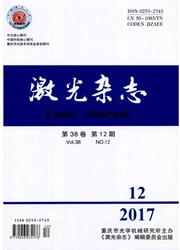

 中文摘要:
中文摘要:
针对高效视频编码(High Efficiency Video Coding,HEVC)标准在编码过程中没有考虑到人类视觉系统的感知特性的问题,提出了一种基于HEVC的时空域感知量化编码策略。首先,对输入的视频序列在变换域求取恰可察觉失真(Just Noticeable Distortion,JND),在最大编码单元(Largest Coding Unit,LCU)层根据JND求取相应的量化参数。其次,通过运动估计方法对输入的视频序列求取运动区域,由于视频序列中存在着各种各样的噪声,影响运动估计的准确性,因此对运动估计后的图像进行滤波处理,以减弱噪声的影响,并将运动区域视为时域感兴趣区域,之后根据是否为运动区域分策略调节量化参数。最后,在LCU编码时,对根据空域感知特性调节的量化参数以及时域感知特性调节的量化参数进行加权,作为LCU最终编码量化参数。实验结果表明,提出的算法在编码时视觉感兴趣区域选择了细量化,而视觉非感兴趣区域选择了粗量化。感兴趣区域的PNSR相对HM11.0能提高0.20—0.59d B,率失真性能最小能提升3.8%,最大能提升6.8%。与代表性文献算法相比,PSNR提升较大。
 英文摘要:
英文摘要:
To solve the drawback of high efficiency video coding( HEVC) which ignores the property of human visual system in the process of video coding,a spatial-temporal perception quantization method is proposed in this paper. Three steps were taken in the experiment. First,just noticeable distortion( JND) in transform domain is obtained for input video sequence,and then used to calculate the quantization parameter( QP) for largest coding unit( LCU). Second,motion area is extracted according to input video sequence by motion estimation. Yet due to the variety of noise in the natural sequence,motion estimation would not be accurate enough. Thus,a novel filter is proposed to weaken the influence aroused by noise. The motion area is regarded as region of interest( ROI) and used to adjust the QP. Third,the ultimate QP is obtained by weighting the QP calculated by JND and ROI. Experimental results showed that the proposed method improves the rate distortion performance and PSNR. For the same PSNR,the proposed approach can save 5. 1% bit on average. Maximal bit rate saving can reach 6. 8%. The PSNR in ROI can be improved by 0. 20 ~ 0. 59 d B compared with the HEVC reference software.
 同期刊论文项目
同期刊论文项目
 同项目期刊论文
同项目期刊论文
 期刊信息
期刊信息
